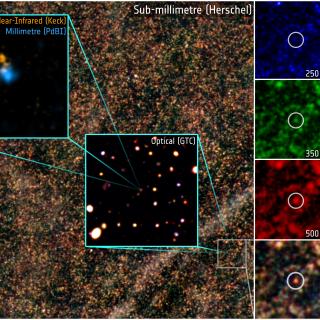Subvenciones relacionadas:
General
ARES (Alta Resolución ESpectral) es un proyecto coordinado que pretende unificar y consolidar el esfuerzo del IAC en la investigación de alta resolución espectral. El objetivo es impulsar programas científicos frontera que el IAC desarrolla en el ámbito de la búsqueda y caracterización de exoplanetas terrestres, en evolución de las poblaciones estelares de nuestra Galaxia y en el ámbito de la cosmología y física fundamental usando espectroscopía ultraestable de alta resolución. ARES incorpora acciones específicas de gran impacto en el diseño y desarrollo de instrumentación de nueva generación para instalaciones telescópicas en el Observatorio Europeo Austral (ESO), el Observatorio del Roque de Los Muchachos, y el observatorio de Calar Alto: ESPRESSO@8.2m-VLT, HORuS@10.4m-GTC, HARPS3@2.5m-INT, NIRPS@3.6m-ESO, ANDES@39m-E-ELT, CARMENES@3.5m-CalarAlto, y HRS@10.4m-GTC. El proyecto ARES permitirá realizar aportaciones técnicas y acceder a una explotación científica garantizada en : (a) ESPRESSO: permitirá, entre otros casos científicos, la detección y caracterización de planetas de tipo terrestre en zona habitable alrededor de estrellas de tipo GKM cercanas del hemisferio sur. (b) HORuS: caracterizará la química de las estrellas más primitivas de la Vía Láctea. . (c) NIRPS: será particularmente eficiente en la detección y caracterización de planetas de baja masa en órbita alrededor de estrellas más frías de tipo M en el hemisferio sur. El IAC está desarrollando el diseño del haz de fibras. (d) HARPS3: se concentrará en sistemas estrella-planeta análogos al sistema Sol-Tierra. El IAC está llevando a cabo el diseño de las habitaciones de aislamiento térmico del espectrógrafo. (e) ANDES: estudiará, entre otros casos científicos, las atmósferas de exoplanetas desde Neptunos a Tierras, incluyendo aquellos en zona habitable, con el objetivo de detectar señales de vida en planetas rocosos. El IAC participa en la fase A del diseño del brazo visible de este espectrógrafo y en el haz de fibras del instrumento. (f) CARMENES: buscará planetas de baja masa orbitando estrellas de tipo M del hemisferio norte, con el objetivo de encontrar planetas de tipo terrestre en zona de habitabilidad. (g) HRS: seguimiento del desarrollo del espectrógrafo de alta resolución y estabilidad para el telescopio GTC previsto para los próximos años.
Miembros
Actividad científica
Publicaciones relacionadas
Charlas relacionadas
No se han encontrado charlas relacionadas.Congresos relacionados
No se han encontrado congresos relacionados.Noticias
No se ha encontrado ninguna noticia relacionada.








